Relive the CEU’s 40 year anniversary (held in 2014) with this celebratory timeline!
If viewing on phone, remember to turn your device sideways for best results.
WCBEU founded with Steve Kershaw as first President
Workers Compensation Board Employees’ Union (WCBEU) certifies 730 Members
95% Strike vote required to secure the first Collective Agreement – 1 year agreement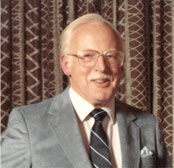
Steve Kershaw
1974-1976
President
50% Increase in Membership
50% increase in membership brings new problems
Board expands operations to other locations
Area offices open and Management picks names from a hat to move members – coined the “meat draw”
Management refuses to bargain second Collective Agreement
Bud McLennan
Becomes President
Second collective
agreement finally signed
Gained rights around transfers and relocation
Improved job posting process
Overtime now payable
More objective process for promotions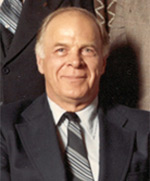
Bud McLennan
1976-1978
President
Third Collective Agreement Signed
Achieved LTD for members
Created new employee types that had different
hours of work – A-Type; B-type and C-type
David Haig
Becomes President
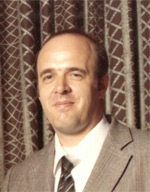
David Haig
1978-1979
President
Ralph Burrows
Becomes President
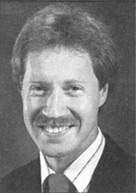
Ralph Burrows
1979 to 1980
President
K.C. Jones
Becomes President
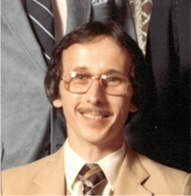
K.C. Jones
1980 to 1984
President
Labour Relations Gets Hot
Labour Relations got hot as disputes arose over wage increments only being granted if you received a favourable performance review.
Union successfully arbitrated the issue and instituted a process that removed bias.
WCB Wage Controls
WCB under the same wage controls on Public Sector Unions
In 1982, through an Order in Council, Government decides to place WCB under the same wage controls that were being imposed on Public Sector Unions.
The infamous Public Sector Employer Council (PSEC) comes into being!
Operation Solidarity Movement
Fresh off a 1983 election win, the
provincial government tabled a series of 26 bills slashing social services, public schools, and the rights of trade unions.
These bills enabled increased governmental control over school boards and colleges, less enforcement of employment standards, the abandonment of the province’s human rights
commission, less Medicare, increased wage control, and the ‘gutting’ of union contracts in the public sector, meaning employees could be fired without cause or in respect to seniority.
A furious backlash took place from unions and other activists that became known as Operation Solidarity. WCBEU members voted 95% to join in the Operation Solidarity Movement
Les Corlett
Becomes President
Employer successfully takes away sick leave payout and fortnight
113 positions declared redundant with office closures announced for Williams Lake; Ft. St. John; Chilliwack and Prince Rupert
WCB froze increment steps blaming government wage controls
Les Corlett
1984 to 1987
President
Dues Increased to 1%
Union office expenses average $10,000/mth over income. Dues increased to 1%
COLA clause lost at
Bargaining
David Bradshaw
Becomes President
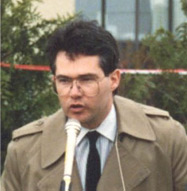
David Bradshaw
1987-1989
President
Gary Kreller
Becomes President
Member anger at their treatment built up over the years. This resulted in a first strike, yet there was no strike fund. It lasted 3 weeks.
Achieved: Wage increases; Layoff and recall rights; Better temporary employee language (this was 10% of the membership at the time); Vacation increase
Gary Kreller
1989 to 1991
President
Dues increased by 0.3%
Membership votes to increase dues by 0.3% dedicated to establishing a strike fund.
It cannot be used for any other purpose.
Name Changed to
Compensation Employees’ Union
Bill Hawkins
Becomes President
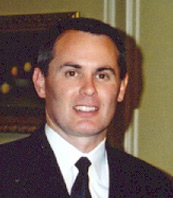
Bill Hawkins
1991 – 2003
President
New Collective Agreement
New Collective Agreement gains a Scheduled Day Off Program that gave members 9 extra days off per year by working extra time during the day
LTD language improved
Bumping procedures gained
Members rights under the
discipline process strengthened
Shoe Shop Contracted Out
1,000 outstanding Job Evaluations has Union and members frustrated with JE process
Defence fund established after 1989 strike reached the $1 million dollar mark.
EFAP program established following agreement in last round of Bargaining
Joint Harassment Policy being
developed
Over 80% of Collective
Agreement Being Altered
Bargaining results in over 80% of Collective agreement being altered
Employment Security with Surplus
Language in place
Close to 100% of grievances are denied at Step one which resulted in an increasing backlog of grievances awaiting arbitration.
Over 300 grievances filed.
Board implements first Attendance
Management Policy
Article 5.04 Harassment Policy incorporated into the Collective Agreement
Expedited Job Evaluation Process begins
to get rid of the huge backlog
Job Changes in Claims
Claims Adjudicator to Case Manager; Claims
Officer 1 to CSR; and Claims Officers II to Entitlement Officer.
Board’s position was everyone would need to reapply and qualify for the new jobs. After much negotiation your Union is successful in securing an automatic rollover in to the new job, and an ability to opt “down”.
Assessments Department undergoes significant reorg with new “Employer Services Strategy” implementation
Union meets with Royal Commission on Workers Compensation
E-File system begins to roll out across the Province
Employment security renewed in early renewal bargaining
Expedited Job Evaluation Process begins to get rid of the huge backlog
Program Agreement Signed
Joint Voluntary Return to Work Program Agreement signed
Group life insurance increased to 3 times annual salary
Solved outstanding grievances on art 15.09 that brought 25 temps into permanent jobs
Legal Officers and articling students brought into bargaining unit
Defence fund reaches over$3.5 million
Rehab Center downsizing begins. Ten workshops reduced to four, with eventual closure coming in 2002.
CEU Becomes Part of the
House of Labour
CEU officially becomes part of the House of Labour as membership votes YES to signing an independent affiliation agreement with BCGEU.
CEU becomes active on the BC Federation of Labour Occupational Health & Safety Committee
SDO Program Ends
9 day Scheduled Days Off Program ends (SDO)
13 days ETO program starts
Secured payment for grievers to attend
their arbitration
S-type employee created
Longer restriction period on postings
(coined lock-down)
Lost employment Security
Employer closes Vernon, Campbell River, Williams Lake, Cranbrook after stating in
Bargaining no imminent changes.
About 500 redundancies declared.
Numerous arbitrations on processes agreed
to under the new Article 70.
Union succeeds on majority.
Sandra Wright
Becomes President

Sandra Wright
2003 to 2019
President
Blue Net Card Gained
Temps can now use seniority when
applying for job postings
Extended benefits lifetime max.
increased to $1 million
Employment Security regained – no layoff, Surplus lists process
Agreement to review Job
Evaluation System and make it Gender Neutral
Significant Increases in Extended Benefits
Significant increases in extended
benefits – paramedical, psychologist, vision care, Dental C; Hearing Aides & others
Grid Collapse from 25 Pay Groupings to 11- results in wage increases for many
Completed Gender Neutral Review of Job Evaluation Plan- results in wage
increases for many
$3700 signing bonus
Improvements in the Posting Process
Delinking of all paramedical under extended benefits results in increased access
White fillings added in dental
PSA testing paid for Moving expenses increase
Letter on the establishment of a
Joint Mental Health Committee
Improvements in the Posting Process
Additional extended family brought in under Bereavement Leave and Serious Illness Leave
R-Type and Graduated Retirement Pilot
agreed to
Achieved a Family Leave
Achieved a Family Leave – Removed
requirement to link to an illness
Introduced Elder care
Clarified rights to apply on temp postings
for those in a job share
Achieved a Letter Of Understanding on
Joint Mental Health Committee
Lost Employment Security- replaced
with bumping process outlined under
article 70- the language that was
arbitrated many times in 2002
2014-2019 Collective Agreement Ratified
CEU Members ratify the 2014-2019 Collective Agreement 1 year after expiry of the earlier contract, following an overwhelming positive strike vote and successful job action within the workplace.
CEU negotiates significant gains
CEU renegotiates and ratifies the 2019 – 2022 Collective Agreement. Significant gains are negotiated to items such as: standby rates of pay; extended benefits levels and coverage; and, the introduction of Workload language into the Collective Agreement.
New CEU President elected
Laura Snow is elected as President of the CEU
Laura Snow
2019 – Present
President
COVID-19 Pandemic impacts CEU Members
Over 90% of CEU Members begin working from home full-time as a result of the COVID-19 pandemic.
CEU hosts virtual conferences and an online AGM for the first time in history.

